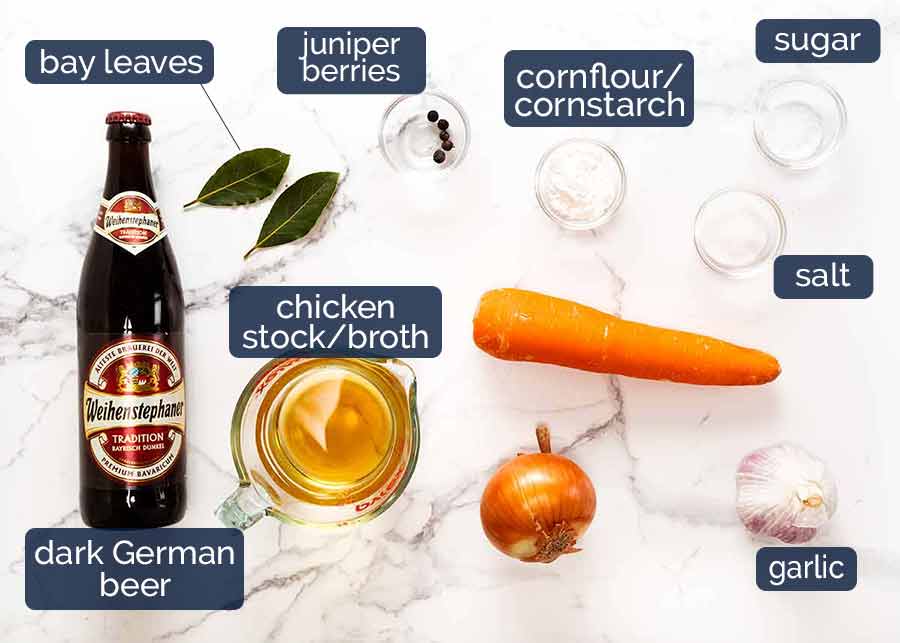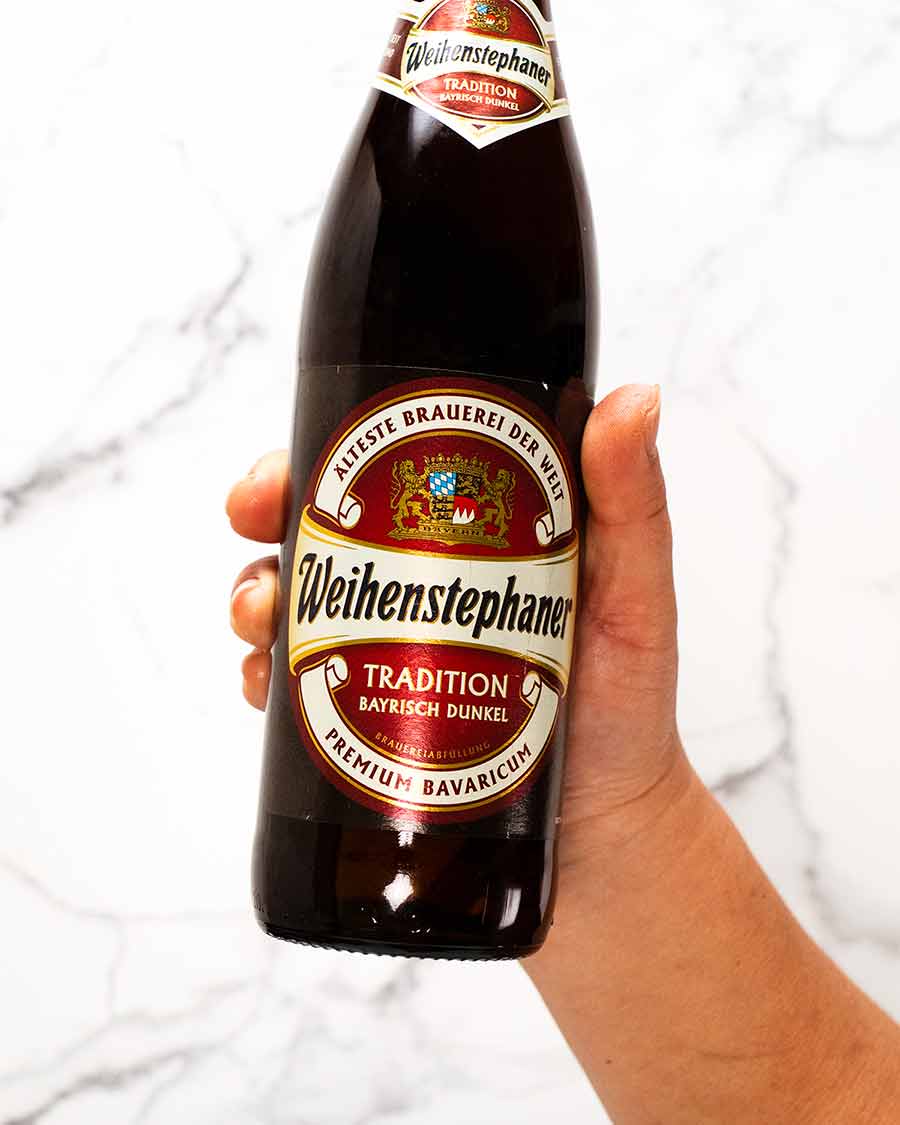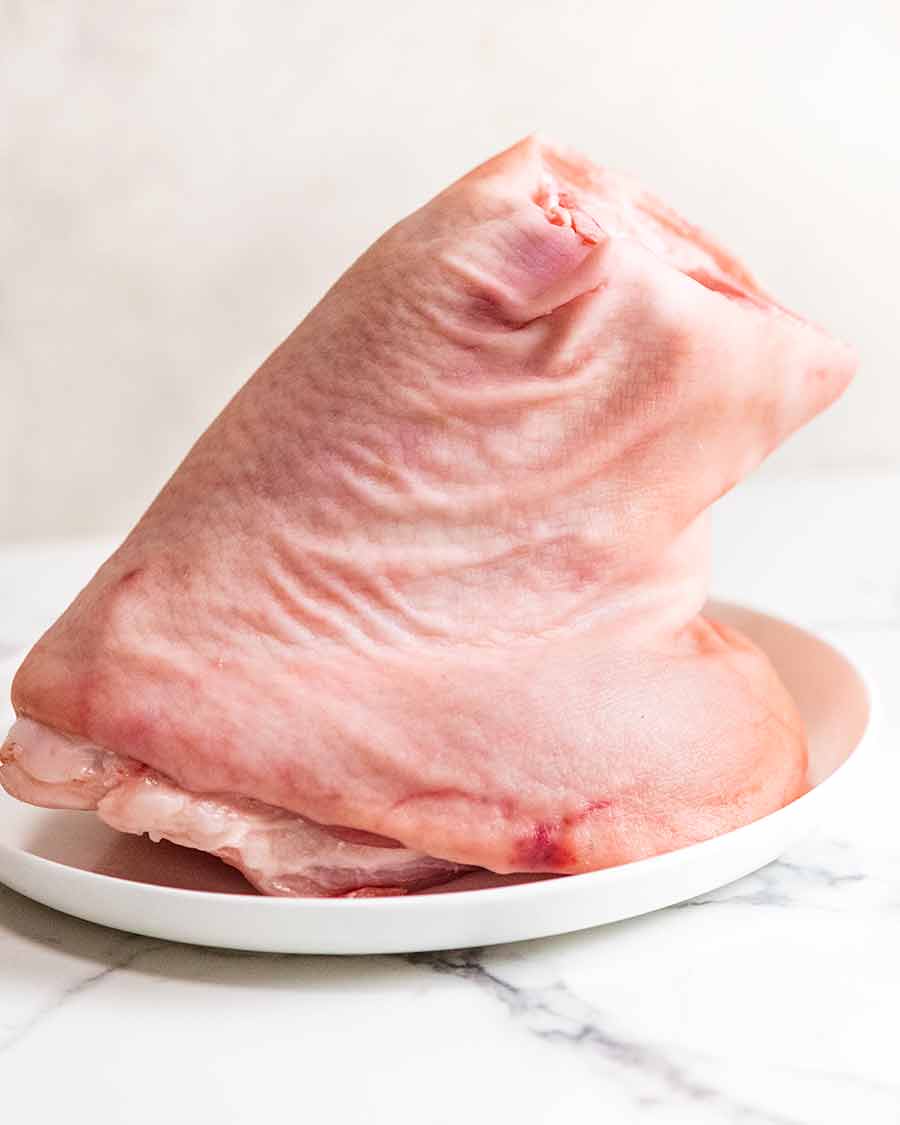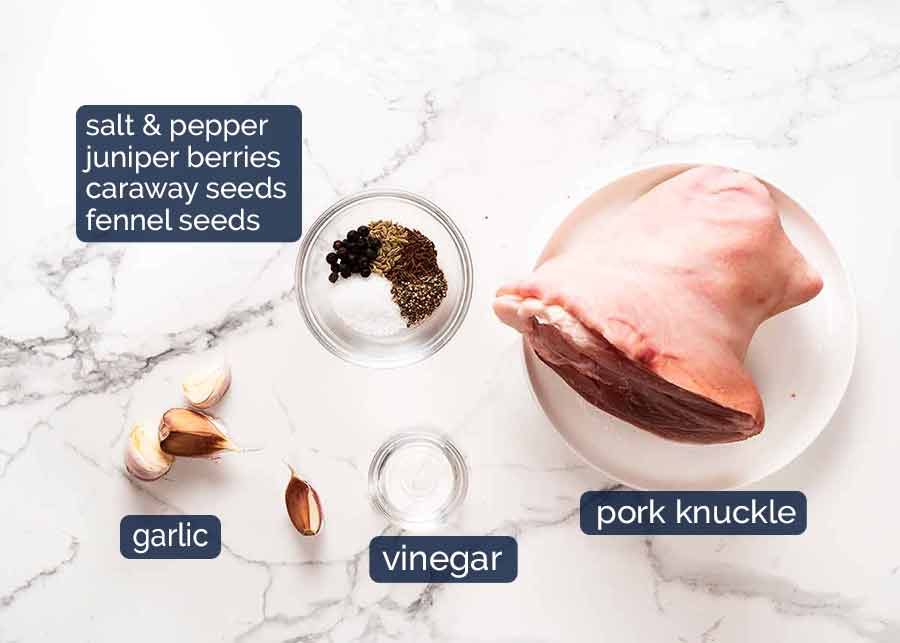It’s called Schweinshaxe and it comes with a rich, flavorful beer gravy. You say it has a piece of unbelievably tender, juicy pork meat on the bone wrapped in crispy crackling skin? Stop beating my heart!
Of the many things Germans have perfected, pork roast is right up there. And of course, great crackling is key to this meaty art. Most recipes for pork knuckle don’t do this well, but we did it!
If you love juicy, tender pork loaded with rich flavor, brining is a must-try technique This simple process infuses pork knuckles with seasoning and moisture for optimal taste and texture Follow this guide to master brining and take your pork knuckles to new heights of deliciousness.
Why Brine Pork Knuckles?
Brining pork is highly effective for several reasons:
-
It keeps the meat incredibly moist and juicy. The salt in the brine seasons the meat while also helping it retain moisture. No more dried out pork!
-
It amps up flavor exponentially. Not only does brining allow the seasoning to penetrate deep into the meat, but it also makes the pork even better at absorbing aromatics from any rubs or sauces added after cooking.
-
It tenderizes the meat. The salt tenderizes pork by breaking down muscle fibers resulting in a tender texture akin to a well-aged cut.
-
It’s incredibly simple. Just submerge pork in a salty, flavored liquid for several hours or overnight. The brine does all the work!
Let’s look at how to brine pork knuckles for finger-licking, fall-off-the-bone deliciousness.
Step 1: Assemble the Brine Ingredients
A basic brine requires just three components:
-
Water – The liquid base allows the salt and sugar to dissolve evenly. Use cold water.
-
Salt – Table salt, kosher salt, or sea salt all work well. The amount varies based on personal taste, typically 1⁄4 to 1⁄2 cup per quart of water.
-
Sugar – White sugar or brown sugar adds balance and enhances browning Use 1 to 2 tablespoons per quart of water
Beyond that, you can add different seasonings or aromatics to impart flavor. Great options include:
- Whole peppercorns
- Bay leaves
- Garlic cloves
- Apple cider vinegar
- Fresh herbs like rosemary or thyme
Step 2: Make the Brine
Combine the brine ingredients in a large pot or container. For 1 gallon of brine solution, mix:
- 1 gallon cold water
- 1⁄2 cup salt
- 1⁄4 cup brown sugar
- 2 tablespoons peppercorns
- 4 bay leaves
- 8 garlic cloves, smashed
Stir vigorously until the salt and sugar fully dissolve. Now you have a tasty brine ready for pork!
Step 3: Submerge the Pork Knuckles
Place the pork knuckles in a container large enough to hold them covered in brine. A pot, bowl, or resealable bag all work.
Pour the brine over the pork, ensuring it covers all surfaces completely. If needed, weigh down the knuckles with a plate to keep submerged.
Refrigerate for 12-24 hours for maximum impact. The brine will work its way deep into the meat for incredibly juicy, seasoned pork.
Step 4: Remove and Rinse
Once brined sufficiently, remove the pork knuckles from the brine and rinse under cold water. This removes excess salt from the exterior.
Pat the knuckles dry with paper towels. At this point, they are ready to cook using your preferred method.
Step 5: Cook and Enjoy!
You can roast, braise, grill, or smoke your brined pork knuckles. The brining makes the meat far more forgiving if overcooked since it retains so much moisture.
As the pork cooks, the incredible flavors infused by brining will concentrate in the meat. The result is succulent, flavored-loaded pork that makes mouths water!
Serve it up with some homemade sauerkraut, potato salad, or beans for a satisfying and delicious meal.
Brining Tips for Best Results
-
Chill both brine and pork before starting for optimal brine absorption.
-
Use an amount of salt you find palatable – it can be adjusted to taste.
-
Add any herbs, spices, or aromatics to the brine that pair well with pork.
-
Use a non-reactive container like plastic or glass to brine. Metal can react with the salt.
-
Brine in the refrigerator at 40°F or below for food safety.
-
Rinse and pat pork dry after brining before cooking or the exterior will be very salty.
-
Always cook brined pork thoroughly to an internal temperature of at least 145°F.
Recipes to Get You Brining
Now that you know the ins and outs of how to brine pork knuckles, here are some tasty recipe ideas to try at home:
Brown Sugar Brined Pork Knuckles
- 1 gallon water
- 1 cup kosher salt
- 1⁄2 cup brown sugar
- 10 black peppercorns
- 5 juniper berries
- 4 bay leaves
Apple Cider Brined Pork Knuckles
- 1 gallon water
- 1⁄2 cup salt
- 1⁄4 cup apple cider vinegar
- 1 onion, sliced
- 4 sprigs thyme
- 2 tablespoons mustard seeds
Miso Brined Pork Knuckles
- 1 gallon water
- 1⁄2 cup salt
- 1⁄4 cup white miso paste
- 4 garlic cloves, minced
- 2-inch knob ginger, sliced
- 1 star anise
Get That Brine On!
Brining is a simple way to make pork knuckles ridiculously tasty and tender. All it takes is submerging the meat in a salt, sugar and flavored liquid to let the brine work its magic. Use this guide to get brining pork knuckles like a pro and take your meals to the next level of deliciousness. Just be sure to save us a taste!

German beer gravy ingredients
A rich, dark, full-bodied gravy flavoured with beer is the traditional sauce served with Pork Knuckle . The base of the gravy is the pan juices remaining after roasting the pork knuckle. Here’s what you need to make it:

Dark German beer – The key flavouring for the gravy which also makes it a deep, dark brown colour. I used Weihenstephaner Tradition Bayrisch Dunkel which is a dark German beer (Bavarian, in fact!) sold at Dan Murphys in Australia .
If you can’t find German dark beer, any dark ale, porter or stout will do (even Guinness!). Just make sure it’s a proper dark beer else the gravy will lack richness, sweetness and colour. However, avoid stouts that are too heavy and bitter, as they can be overwhelming here.

- A flavor base for homemade stocks is often made with bay leaves, carrot, onion, and garlic. That’s pretty much what we’re doing here!
- Chicken stock – For extra savoury depth in the gravy. In case you don’t have any, I’m sure the gravy will still taste good if you use water instead;
- More of those fruity, sour juniper berries that taste like the flavor in the pork rub;
- Salt and sugar – Seasonings for the gravy; and
- Cornflour / cornstarch – To thicken the beer gravy. This is a pretty common way to make beer gravy for a few reasons. For starters, it makes the gravy clearer than flour, which makes gravies cloudy. Second, we have a lot of pan liquid left over after roasting the pork because we’re making a tasty stock while it cooks. This is not the same as the drippings from roasting meats like lamb, pork, etc., which don’t have much liquid at first. You don’t have to cook the flour in the pan drippings and then add the liquids to make the gravy. Instead, you can just stir the thickener into the stock.
Ingredients for Crispy German Pork Knuckle
First up, you need to get your hands on a pork knuckle. Here is what it looks like:

First, pork knuckles are not pig’s feet, despite their name. They are the meaty top part of the pig’s leg. Pig knuckle, pork shanks, pork hock, and ham hock are all names for pork knuckle. The word “ham hock” can also mean smoked or cured hocks. We only need the rear leg knuckles or hocks for German Pork Knuckle because they are bigger and meatier. You can get smaller pork knuckles or hocks from the front legs of a pig. These are often smoked to make smoked ham hocks, which are used in dishes like Pea and bacon.
Note also that sometimes pork knuckles / hocks are sold brined (salted) as pickled hocks or ham hocks. Lightly brined knuckles may be suitable for this recipe, however I have not tested this. We also do not want smoked hocks. I recommend you stick to un-brined, raw pork knuckles / hocks.
One pork knuckle (around 1. 2 – 1. 3kg / 2. 6 – 2. 9lb) is enough to comfortably feed two. If it’s a particularly small knuckle, it will feed one very hungry eater!.
Where to find pork knuckle: In Sydney, you can buy them at some butcher shops, but you may have to ask for them because they may keep them out the back instead of on the counter. However, I found it quite easy to get pork knuckle from Asian butchers. They may have it displayed or stored at the back. They are good value at around $8/kg ($4/lb)! Remember: Ask for rear leg hocks / knuckles. And show them the photo above! .
For some fun facts about food, pork knuckles are often sold at Asian butcher shops because they are a cut of pork that is used in Asian cooking. In Western cooking, on the other hand, the pork knuckle is usually part of the whole ham (leg), which is why it’s not as common to find it on its own at Western butchers. ).
Here’s what you need to prepare the pork for roasting:

- Some traditional spices that are used to season pork knuckle are juniper berries, caraway seeds, and fennel. However, juniper berries are not as common in Australian grocery stores. They are still easy to find. While spice shops usually have them, delis and fresh food stores that have a good selection of herbs and spices (e.g. Harris Farm);.
- And because garlic is always a good thing, these are cut into thin slices and stuffed into small cuts made in the pork.
- Vinegar: You can brush vinegar on the pork’s meat and skin to get rid of the strong pork smell that can come from roasting secondary pork cuts. This isn’t something that all pork recipes do, but it’s a good idea to do it just in case. It does not make the pork taste “vinegary” at all.
Traditional Pork Knuckles – A Typical Oktoberfest Dish From Germany
FAQ
How to brine a pork hock?
Is pork knuckle the same as pork hock?
How to cure pork hocks?
Is pork knuckle cured?
